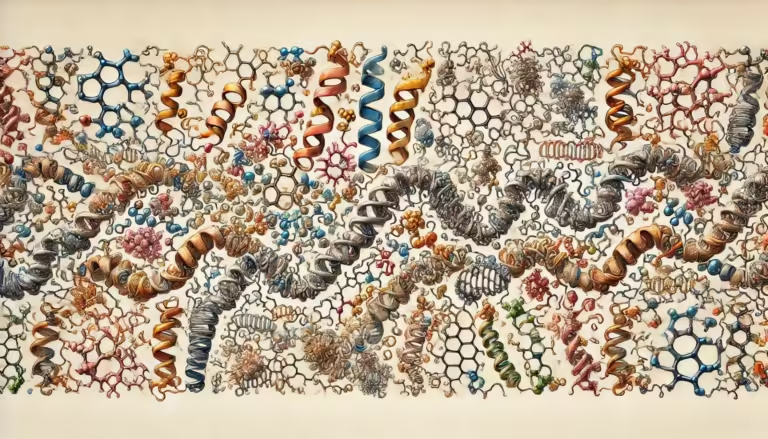Among all the molecules that make up living things are proteins. They are essential for almost all biological processes acting as enzymes to drive chemical reactions as well as the development of muscles and tissues. What precisely though are proteins composed of? Fundamentally, monomers smaller building blocks—make up proteins. These monomers which go by the name of amino acids serve as the building blocks for all proteins.
In this Article will define protein monomers, explain how they combine to make proteins and discuss the importance of protein monomers to life as we know it.
What Are Monomers?
Let us first review what a monomer is before delving into the particular monomers that comprise proteins. A monomer is a small simple molecule in chemistry that forms bonds with other monomers to form a polymer which is a larger complicated structure. Many of the manufactured and natural things we come into contact with on a daily basis, such as plastics, DNA and proteins are polymers, which are extended chains of repeating units.
Amino acids are the monomers found in proteins; these amino acids create long chains by bonding together in certain patterns. Subsequently these chains fold into distinct three-dimensional structures that endow proteins with their functional attributes.
What are the Monomers of Proteins?
| Category | Description |
|---|---|
| Monomer | Amino acids |
| Basic Structure | Central carbon atom bonded to an amino group, carboxyl group, hydrogen atom, and R group (side chain) |
| Number of Amino Acids | 20 different types |
| Bond Between Monomers | Peptide bond |
| Chain of Amino Acids | Polypeptide |
| Levels of Protein Structure | 1. Primary (sequence of amino acids) 2. Secondary (alpha-helix, beta-pleated sheet) 3. Tertiary (3D folding) 4. Quaternary (multiple polypeptide chains) |
| Functions of Proteins | Enzymatic activity, structural support, transport, defense, communication |
| Examples | Enzymes, collagen, hemoglobin, antibodies |

Amino Acids: The Monomers of Proteins
Twenty distinct types of amino acids make up proteins, and each one has a slightly different chemical structure. All amino acids in spite of these differences, have the same fundamental structure, which consists of an alpha carbon the center carbon bonded to four distinct groups. These teams are:
1. Amino Group (NH2) :- A nitrogen atom bound to two hydrogen atoms is known as an amino group (NH2).
2. Carboxyl group (COOH) A carbon atom double bonded to an oxygen atom and single bonded to a hydroxyl group is known as a carboxyl group (COOH).
3. Hydrogen atom (H) :- One hydrogen atom (H) in the universe.
The side chain or R group is a variable group that varies throughout amino acids and confers specific characteristics upon each.
4. R group (side chain): A variable group that differs between amino acids and gives each one its unique properties.
What distinguishes each amino acid is its R group. For instance certain R groups are hydrophilic (they attract water) and others are hydrophobic (they reject water). There are basic and acidic types. The final structure and function of the protein that the amino acids produce depend on these variations in R groups.
How Do Amino Acids Link Together?
Through a process known as a dehydration synthesis reaction a water molecule is taken out of the amino acid chain to create a bond. A peptide bond is created when the carboxyl group of one amino acid joins forces with the amino group of another. A dipeptide is the end product of joining two amino acids. A polypeptide is a chain that has additional amino acids added to it.
Proteins are created when polypeptide chains reach a certain length. Nonetheless the organisms DNA specifies the exact order in which the amino acids must be placed. The protein’s structure and method of folding are determined by this sequence.
Protein Structure
- Primary Structure: This level is the most basic and consists only of the polypeptide chain amino acid sequence. A minor alteration in this sequence can have a significant impact on the function of the protein as the main structure serves as the protein alphabet.
- Secondary Structure: The polypeptide chain starts to fold into two common shapes once the main structure is formed: the beta-pleated sheet which is a folded sheet and the alpha-helix. The hydrogen bonds that hold the amino acids together stabilize these forms.
- Tertiary Structure: After that the secondary structure folds even further into a three dimensional form that is more intricate. Numerous interactions including as ionic and hydrogen bonding as well as hydrophobic interactions between the amino acid R groups sustain this structure. The protein unique function is derived from its tertiary structure.
- Quaternary Structure: The way polypeptide chains fit together is referred to as the quaternary structure. Certain proteins are composed of several polypeptide chains. For instance the oxygen carrying protein in your blood hemoglobin is composed of four polypeptide chains.
Why are the Protein Monomers Important?
- Enzymatic activity: Proteins called enzymes catalyze biological reactions increasing their rate and effectiveness. Numerous processes that are essential to life would proceed too slowly without enzymes to support it.
- Functions in tissues: Collagen and keratin are proteins that give tissues including skin bones and hair structural support.
- Transport: Molecules within the body are moved by proteins. For example hemoglobin carries oxygen throughout the blood.
- Defense: The immune system employs antibodies which are proteins to identify and destroy dangerous invaders like bacteria and viruses.
- Communication: Certain proteins function as receptors or hormones and enabling intercellular communication.
You may also like this: Somatic Yoga for Beginners, Weight Loss, Benefits & Exercises
If you are also looking for fitness guidance you must visit this.
FAQs
How many different amino acids are there?
Commonly found in proteins are twenty typical amino acids. Every amino acid has a distinct side chain or R-group that bestows upon it particular characteristics.
What determines the structure and function of a protein?
How a protein folds into its three-dimensional shape (secondary, tertiary and quaternary structures) is determined by the amino acid sequence in the polypeptide chain (primary structure). The precise function of the protein depends on its structure.
How do proteins differ from each other?
The precise types and sequences of amino acids as well as the folding and interaction patterns of the polypeptide chains, distinguish proteins from one another. This leads to a wide variety of protein shapes and activities.

Ankush Kumar is a professional content writer and the founder of Healthnick.com. He is a health and wellness enthusiast with a deep interest in nutrition, fitness and holistic living. Harish is committed to delivering research-based insights on various health topics. He enjoys exploring new trends in health, experimenting with nutritious recipes, and staying active.






